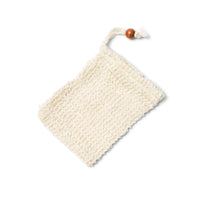
We hear so much about the bees, but what about the Monarch Butterflies?
If you're not quite familiar with them, they're the yellowy-orange ones lined with cute black and white dots around their frame. To me, the Monarchs are the most classic butterfly in the book. They're just as important of a pollinator as the bees and are disappearing at a rapid rate for the same reason - our chemical-ridden, agriculture industry & climate change.

The Monarch butterfly, I think, is a highly underrated insect. Their lifespan is roughly 6-8 months and they migrate annually from Canada & North America down to Mexico. They spend their summers in North America & Canada, and complete a round-trip 6,000 mile migration to a mountainous, fir forest in central Mexico for the winter. In the spring, they travel back North for the summer. They even take directional guidance on their migration from the sun. It is the most highly evolved migrating pattern in any insect to date. On top of it all, they're pollinators just like the bees and our crops depend on them, as does humanity.
Unfortunately, less and less are arriving to Mexico each year. According to National Geographic, in the 90s there were billions of Monarchs arriving in Mexico and today their count is closer to 90 million. According to the Center for Biological Diversity, their species needs to have an estimated population of 225 million to be considered "safe", and there is a 57% chance that the population will be extinct in 20 years.

Monarch butterflies lay their eggs in milkweed plants and when their eggs become caterpillars, their main source of food is milkweed. As you can see, these species is heavily dependent on milkweed, and milkweed is consistently being destroyed by pesticides. Not only that, but climate change is effecting their migration patterns. Colder, wetter winters & dryer, hotter summers can shift their habitats and other one-off, erratic weather patterns can seriously disrupt their food source and kill them.
If you'd like to help, consider planting milkweed & wildflowers in your yard for pollinators and say no to any pesticide use. You can even start your own monarch garden & habitat! Don't let this beautiful & helpful species disappear - after all, roughly 70% of our food crops depend on them.
Sources:
https://www.biologicaldiversity.org/news/press_releases/2018/monarch-butterfly-03-05-2018.php
https://www.worldwildlife.org/species/monarch-butterfly
https://www.nationalgeographic.com/people-and-culture/food/the-plate/2014/09/23/jose-andres-why-we-need-to-protect-monarch-butterflies/
https://www.nationalgeographic.com/animals/invertebrates/m/monarch-butterfly/
https://www.techtimes.com/articles/143486/20160324/monarch-butterflies-may-be-doomed-what-happens-if-they-go-extinct.htm





